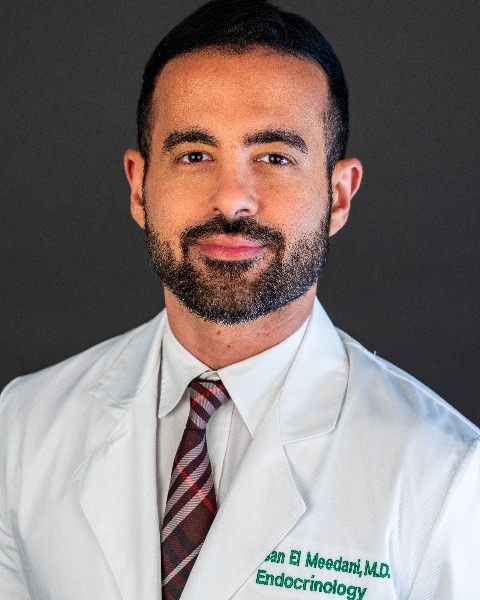Parathyroid/Bone Disorders
(20.03) A case of Primary Hyperparathyroidism presenting with Urosepsis in Pregnancy

Hassan El Meedani, MBBCh
fellow physician
Marshall University
huntington, West Virginia, United States
Submitter(s)
Case(s) Description :
The patient is a 30-year-old primigravida at 34 weeks of gestation with a history of nephrolithiasis diagnosed in 2020. She is an otherwise healthy female who presented to the ED on 8/14/2023 with right flank pain associated with nausea and vomiting. The initial workup showed elevated WBCs 21,000 k/cmm, elevated calcium14 mg/dl, albumin 2.6 gm/dl,PTH 33, and GFR 37 ml/min/1.73 m2. Renal ultrasound confirmed bilateral non-obstructive kidney stones with mild hydronephrosis. Endocrinology was consulted, and the patient was started on calcitonin and IV fluids, leading to an improvement in corrected calcium to 12.9mg/dl. Subsequently, the patient was discharged with nasal calcitonin.
Two days later, she was readmitted to the hospital due to persistent abdominal pain and was found to have persistent severe hypercalcemia with a corrected Ca of 15.1mg/dl. The patient received treatment with IV fluids and calcitonin, but there was no improvement. Cinacalcet 30 mg BID was initiated.Thyroid/parathyroid ultrasound revealed a 2.9 cm right inferior parathyroid gland concerning a parathyroid adenoma. A multidisciplinary decision involving ENT, endocrinology, urology, and obstetrics was made to deliver the patient at 35 weeks gestation. She was discharged with a serum calcium level of 12.2mg/dl.
Almost two weeks later, the patient underwent a right inferior parathyroidectomy, which she tolerated well. She experienced no postoperative complications, and her hypercalcemia resolved.
Discussion : The interventions for addressing primary hyperparathyroidism during pregnancy are significantly constrained, given the insufficient safety data associated with the various potential therapies. Surgical intervention is recommended during the second trimester when severe hypercalcemia is present (calcium adjusted for albumin greater than 3.0 mmol/L (12.0 mg/dl)). It is crucial to prevent hypercalcemia during pregnancy to mitigate potential complications for both the mother and the fetus. [3],[4].
